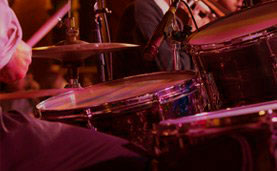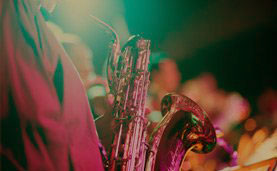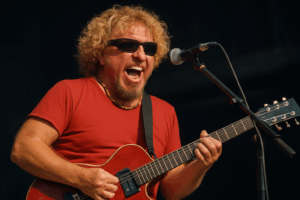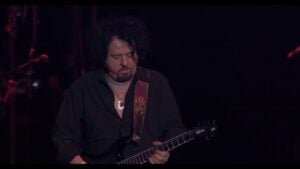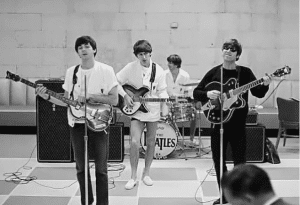The 10 Most Important Guitar Rock Solos In Music History
via five watt world / YouTube
Rock music has gone through countless transformations since the 1950s, but one thing has remained constant—the power of a great guitar solo. Whether it’s a burst of raw emotion or a display of technical brilliance, a solo can elevate a song to legendary status. Even during eras when flashy guitar work fell out of fashion, it never truly disappeared.
Some solos did more than just impress listeners—they redefined the sound of rock itself. These moments shaped new styles, inspired future generations, and became timeless staples of the genre. They didn’t just push boundaries; they tore them down.
The following list highlights solos that left a lasting mark on rock music. Some set new standards for musicianship, while others captured the essence of their time. Each one, in its own way, changed the course of rock history.
“Rumble” – Link Wray
Few instrumentals have ever stirred up as much controversy as Link Wray’s 1958 classic, “Rumble”. Despite having no lyrics, the song was deemed so menacing that it was banned from some radio stations. Its heavy use of power chords and gritty distortion gave it an edge that felt dangerous, evoking images of street fights and rebellion.
Wray’s signature sound wasn’t crafted in a high-tech studio—it came from pure ingenuity. After an accidental volume spike during a live performance, he experimented by puncturing his amp’s speaker to create a raw, distorted tone. Years before bands like The Kinks and The Rolling Stones popularized the effect, “Rumble” was already pioneering the dirty, aggressive guitar sound that would define rock.
The song’s influence extended far beyond its era. Pete Townshend credited “Rumble” as his reason for picking up a guitar, and Bob Dylan called it the “finest instrumental ever.” Even decades later, its impact remains undeniable, proving that sometimes, a few well-placed chords can shake up music history.
“Hey Joe” – Jimi Hendrix
The origins of “Hey Joe” may be debated, but Jimi Hendrix’s version is the one that left a lasting mark. While other bands, like The Byrds and The Leaves, played it fast and punchy, Hendrix slowed it down, drawing from Tim Rose’s folk-inspired take. His bluesy, emotive solos gave the song a weight and intensity that set it apart from earlier versions.
This wasn’t just another cover—it was a turning point. Hendrix’s performance of “Hey Joe” at a New York club caught the attention of Animals bassist Chas Chandler. Blown away by Hendrix’s raw talent, Chandler became his manager and brought him to the U.K., where the song climbed to No. 6 on the charts. It was Hendrix’s first big break, though surprisingly, “Hey Joe” never charted in the U.S.
Despite that, the song remains one of his most celebrated works. His haunting solos, filled with soul and precision, showcased what made Hendrix such a revolutionary guitarist. It may not be his flashiest performance, but it was the one that started it all.
“While My Guitar Gently Weeps” – The Beatles with Eric Clapton
It’s fitting that one of the most emotional guitar solos on a Beatles song wasn’t played by a Beatle. At George Harrison’s request, Eric Clapton stepped in to record the solo for “While My Guitar Gently Weeps” on the White Album. His expressive playing perfectly captured the song’s sorrowful tone, adding depth to Harrison’s already poignant lyrics. His presence also had an unexpected effect—Harrison later noted that his bandmates took the session more seriously with Clapton in the room.
The solo didn’t just make the song a classic—it continued to inspire decades later. In 2004, during his Rock and Roll Hall of Fame induction, Prince stunned the world with a fiery rendition of “While My Guitar Gently Weeps”. Sharing the stage with legends like Tom Petty, Jeff Lynne, and Dhani Harrison, he took Clapton’s solo and made it his own, blending technical brilliance with pure showmanship.
Prince’s performance wasn’t just a tribute—it was a statement. Having been left off Rolling Stone’s list of the greatest guitarists, he let his playing do the talking. No words were needed. His breathtaking solo proved that he belonged among the best, turning an already iconic moment into something unforgettable.
“Stairway to Heaven” – Led Zeppelin
Few songs in rock history are as iconic as “Stairway to Heaven”. Since its release on Led Zeppelin’s fourth album in 1971, it has been a cultural phenomenon, inspiring both admiration and controversy. Guitar stores have joked about banning customers from playing it, thanks to its legendary status, while conspiracy theorists have obsessed over supposed hidden messages when played in reverse. But no debate overshadows Jimmy Page’s soaring guitar solo, which takes the song from a delicate folk ballad to an electrifying hard rock climax.
Page always intended for “Stairway to Heaven” to break the mold. Speaking to The Guardian in 2014, he explained that the shifting tempo and intensity were deliberate choices, defying the rigid verse-chorus structure of conventional songwriting. The song constantly builds, drawing the listener in with its gradual escalation until it erupts into one of rock’s most celebrated solos.
While “Stairway to Heaven” wasn’t the first rock epic, it paved the way for others like “Bohemian Rhapsody”. Its multi-layered structure and unforgettable solo helped redefine what a rock song could be. Decades later, it remains a benchmark for guitarists and a masterpiece of musical storytelling.
“Free Bird” – Lynyrd Skynyrd
Originally, “Free Bird” was a simple four-minute ballad, stripped down and somber. Guitarists Gary Rossington and Allen Collins later added a solo at the end, but in its early form, it lasted just about a minute. That all changed one night when lead singer Ronnie Van Zant, needing a break, asked them to stretch it out.
As Rossington recalled to Classic Rock, Van Zant’s sore throat forced the band to extend the solo even further. “We played two minutes or three minutes,” he said. “Then two days later, his throat was all sore, and we ended up playing it 10 minutes at the end, just jamming.” That spontaneous extension turned into one of rock’s most legendary guitar outros.
By the time “Free Bird” was officially released on (Pronounced Leh-Nerd Skin-Nerd) in 1973, it had grown to over nine minutes. Despite its length, the song defied expectations and climbed to No. 19 on the Billboard Hot 100. It became a defining anthem of Southern rock and a live staple, proving that an extended jam could captivate audiences just as much as any chart-friendly hit.
“Eruption” – Van Halen
Jimmy Page may have introduced two-handed tapping on “Heartbreaker”, but Eddie Van Halen took it to another level with “Eruption”. His lightning-fast technique, using both hands on the fretboard, became a game-changer. It set a new standard for guitarists, especially in the ’80s, as countless players tried—and failed—to match his speed and precision.
Originally, “Eruption” wasn’t even meant to be recorded. It was just a warm-up routine Eddie played before shows. But when producer Ted Templeman overheard him practicing in the studio, he knew it had to go on the album. “I walked in and Ed was sitting there playing it,” Templeman recalled. “I said, ‘Donn, roll tape!’ and he said, ‘I’m rolling.'” That spontaneous decision led to one of the most iconic instrumental tracks in rock history.
Despite its legendary status, Eddie himself wasn’t fully satisfied with the final take. He later admitted, “I didn’t even play it right… I could have played that better.” But fans would disagree. Even with its supposed flaws, “Eruption” remains one of the most influential guitar solos ever, inspiring generations of musicians to push the limits of what’s possible on the instrument.
“Comfortably Numb” – Pink Floyd
“Comfortably Numb” isn’t just one of Pink Floyd’s most famous songs—it also features what many consider David Gilmour’s greatest guitar solo. Unlike the shredders of his era, Gilmour didn’t rely on speed or technical flash. Instead, he used soaring bends and carefully placed notes to convey pure emotion. His “less is more” approach made the solo a masterclass in expressive playing, perfectly complementing the song’s haunting mood.
The inspiration behind “Comfortably Numb” came from a real-life experience. Roger Waters once performed while heavily sedated, an incident that helped shape the song’s unsettling lyrics. But behind the scenes, it became another battleground in Pink Floyd’s growing internal tensions. Waters and Gilmour clashed over creative control, with Gilmour providing the music and Waters crafting the words. Their partnership was already strained, and The Wall would be one of their last real collaborations.
Even the solo itself was a point of contention. Waters wasn’t happy with Gilmour’s second attempt, calling it stiff and lifeless. In the end, they combined elements from both takes to create the final version. Despite the friction, Gilmour’s solo remains one of rock’s most iconic moments—proof that sometimes, tension can fuel greatness.
“Sweet Child o’ Mine” – Guns N’ Roses
Guns N’ Roses stood apart from their Sunset Strip peers, embracing a grittier, more dangerous sound. While most bands of the era focused on glam and excess, GNR leaned into raw emotion and harsh realities. Yet, they still had a softer side, as proven by “Sweet Child o’ Mine”, their only No. 1 hit. The song’s instantly recognizable riff made it legendary, but Slash’s soaring, bluesy solo gave it an extra layer of depth.
Despite the song’s success, Slash wasn’t always a fan of “Sweet Child o’ Mine”. In hindsight, he admitted that its ballad-like structure felt out of place for the band’s hard-hitting style. However, one thing he never doubted was his solo. It wasn’t just another flashy lead—it was an expression of pure instinct.
According to Slash, the solo came together naturally and became his favorite part of the song. He recalled how, when given the chord changes, the notes just flowed effortlessly. That spontaneity made it special, setting it apart from typical 1980s hard rock solos. Even years later, it remains one of his most defining moments as a guitarist.
“Smells Like Teen Spirit” – Nirvana
Kurt Cobain didn’t need flashy guitar skills to make an impact. When Nirvana exploded with “Smells Like Teen Spirit” in 1991, his solo was as unpretentious as the song itself. Instead of crafting a complex lead, he simply echoed the vocal melody—a perfect anti-rock star move that fit the grunge ethos.
With Nirvana’s rise, the dominance of hair metal and its technical guitar solos crumbled. Cobain’s raw, stripped-down approach replaced the excess of the ’80s. He focused on emotion and simplicity rather than indulgent shredding, proving that less could be more.
Cobain himself was indifferent to the solo. Speaking to Rolling Stone, he admitted he barely remembered it and could relearn it in minutes. He enjoyed playing “Teen Spirit” but found its popularity almost embarrassing. That attitude summed up Nirvana’s entire philosophy—rejecting rock clichés while accidentally creating a new musical revolution.
“Killing in the Name” – Rage Against the Machine
Rage Against the Machine didn’t invent rap-rock, but they took it to a whole new level. Tom Morello’s guitar work was a key reason why, acting almost like a second voice alongside Zack de la Rocha’s fiery lyrics. His riffs were percussive, sharp, and packed with attitude, making his guitar sound more like a DJ’s turntable than a traditional rock instrument.
Nowhere was Morello’s approach more evident than in “Killing in the Name”. The song evolved from standard heavy metal licks to something that mirrored hip-hop production. Morello later revealed that he was inspired by Dr. Dre and Cypress Hill, aiming to replicate their high-pitched wailing sounds in a way no guitarist had done before.
The result? A track that set the gold standard for rap-metal. While many bands tried to follow in Rage’s footsteps, few could match their seamless fusion of hip-hop and rock. “Killing in the Name” remains a defining moment for the genre, proving that Morello’s inventive style was impossible to duplicate.


